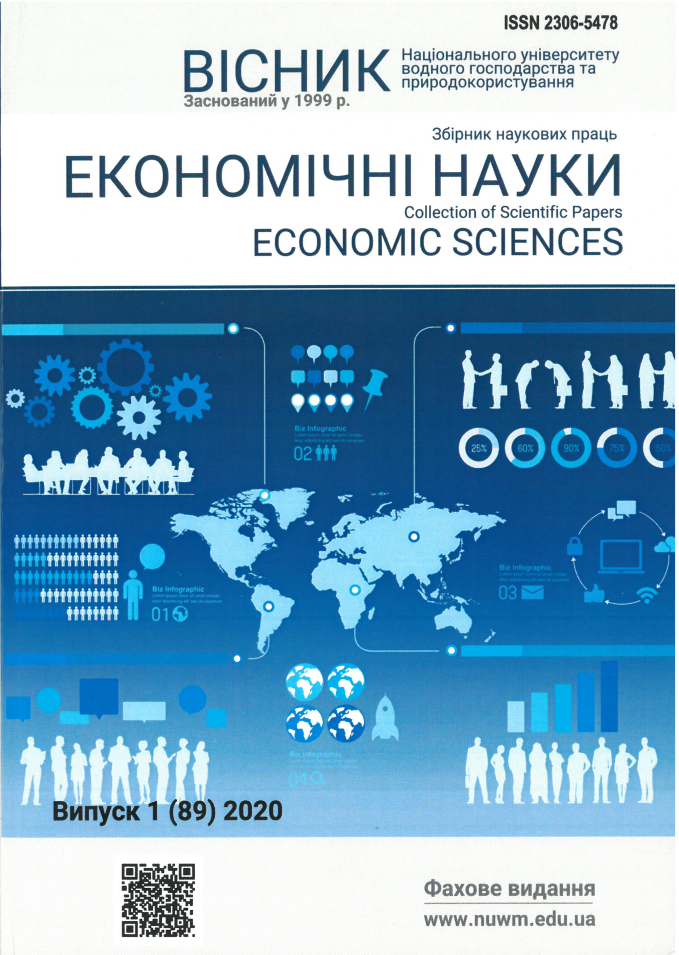CVP-ANALYSIS AS AN EFFECTIVE TOOL IN PLANNING AND FORECASTING OF ENTERPRISES’ ACTIVITIES
DOI:
https://doi.org/10.31713/ve1202014Keywords:
break-even analysis, variable costs, fixed costs, margin analysis methodology, break-even point, sales volume.Abstract
In today’s economy, for the effective operation of the enterprise,important attention should be paid to management decisions andforecasting. For management of the enterprise the detailed informationconsidering technology and the organization of this enterprise is necessary.Very relevant and most effective analysis of the ratio of costs, volume and profit, that is, break-even analysis.In this article the methods of break-even point and margin analysis areinvestigated. The main goal of the article is to study theoretical and practical recommendations that will facilitate the application of this analysis in any situation.To achieve the results the break-even point analysis and marginanalysis indicators are used in the article. The methodology used in thiseconomic study is to make accurate calculation of indicators.In the course of the study it was found that the biggest problems in theapplication of CVP-analysis method arise in the distribution of fixed costs in the conditions of multiple products. Therefore at calculation of a break-even point of kinds of production two approaches have been applied forcomparison: traditional and administrative. They differ in the methodology of allocation of fixed costs, but show significant results of break-even production of certain products. Achievement of the critical point of production was not enough to predict the activity of the enterprise. It is necessary to know the amount of possible profit, the guarantees of its receipt and the amount of revenue to cover all costs to make profit.The results showed that CVP-analysis simplifies the cost/benefit ratioand assumes that it is based on linear relationships. Such an analysis willshow how efficient a single product is and in what quantities it must beproduced in order to achieve profit. The calculation of some indicatorsshowed that costs should be reduced and which should be increased.Thus, all generalizing indicators of CVP-analysis at the enterpriselevel have the full right to exist and use, especially since none of themcontradicts the classical theory of break-even at the level of a singleproduct.References
Lykholat S. M., Madelyk P. R. Ekonomichna sutnist prybutku pidpryiemstva. URL: http://www.nbuv.gov.ua/portal/chem_biol/nvnltu/16_2/186_Lycholat_16_2.pdf (data zvernennia: 05.02.2020).
Ivaniuta P. V., Luhivska O. P. Upravlinnia resursamy ta vytratamy : navch. posib. / za red. S. M. Ivaniuty. K. : Tsentr navchalnoi literatury, 2009. 320 s.
Holov, S. F. Upravlinskyi oblik : pidruchnyk. K. : Libra, 2003. 704 s.
Vlasyk H. V. Analiz ta otsinka isnuiuchykh system upravlinnia vytratamy. Ekonomika ta pidpryiemnytstvo. 2006. № 6. S. 76–79.
Andriichuk R. V. Metodychni pidkhody do analizu rentabelnosti ta bezzbytkovosti vyrobnytstva produktsii y optymizatsii yii asortymentu. Ekonomika APK. 2007. № 5. S. 133–140.
Nazarenko, T. P. Analiz stanu naukovykh doslidzhen pytan marzhynalnoho analizu. Visn. ZhDTU. Zhytomyr, 2009. № 1 (47). S. 76–81.
Kulynych M. B. Osoblyvosti marzhynalnoho analizu prybutku i yoho vykorystannia pid chas pryiniattia rishen. Nauk. visn. Volyn. nats. un-tu im. Lesi Ukrainky. Lutsk, 2010. № 5. S. 146–148.
Yankovyi V. O., Kuperman V. V. Antykryzove upravlinnia pidpryiemstvom na osnovi analizu bezzbytkovosti. Visnyk sotsialnoekonomichnykh doslidzhen : zb. nauk. pr. / holov. red. M. I. Zvierkov ; Odeskyi derzh. ekon. un-t. Odesa, 2009. Vyp. 36. S. 221–227.

